2019 BMW i8 Roadster: First Drive, Top O
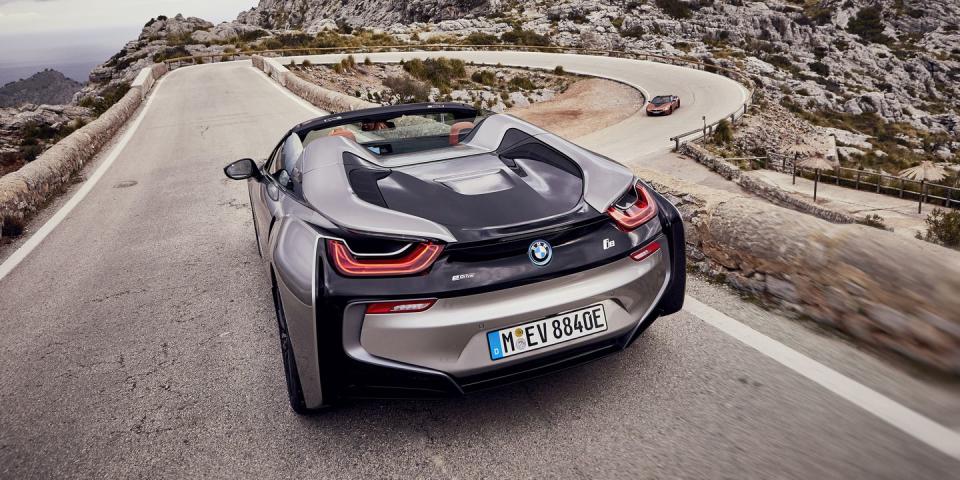
By the time an i8 Roadster first shows up on somebody's driveway, BMW's Vision Efficient Dynamics Concept–the genesis of the entire i Division–will be ten years old. Of course while that was just a wild show car with a turbodiesel plug-in hybrid drivetrain, what followed in 2011 at Frankfurt was a more serious proposition, with production-ready populations and a body like no other.
To add to the confusion, BMW followed up with i8 Concept Spyder in 2012, but despite Uma Thurman's widest smiles at the Bavarians' 'Born Electric' World Tour opening night party in New York City, that concept was never supposed to spawn a production model. It was purely an all show, no go mockup.
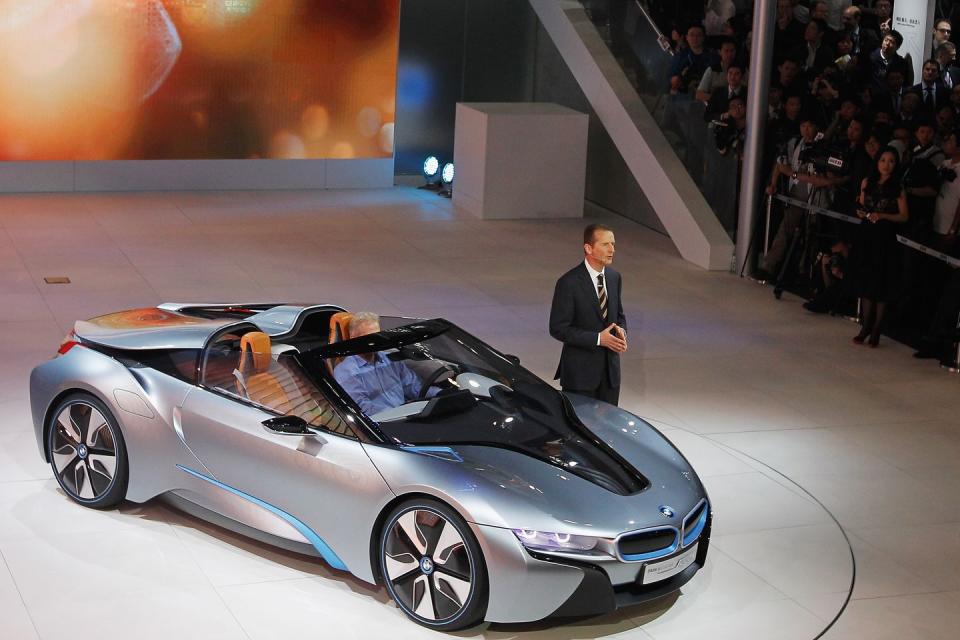
That's because BMW's bean counters informed the board very early on that there's no business case for the roaster version, and so the i8's backbone, the CFRP Life module wasn't engineered to work without having hardtop. As weird as that may sound in the case of a carbon fiber passenger cell.
The i8 Coupe finally hit the streets in 2014. Chris Harris drove it for us, daring you to compare it to an M1. Then, we revisited BMW's most daring experiment three years later, only to leave the cockpit asking for more performance in light of the rapid rate of technological development presented by the competition.
But just when the i8 Coupe's already low sales figures started to decline faster than the latest iPhone's, BMW's engineers did something quite remarkable. Believing that the Roadster was a must, they drove a blue i8 Coupe into their workshop, only to plug in the angle grinder, presumably equipped with diamond blade.
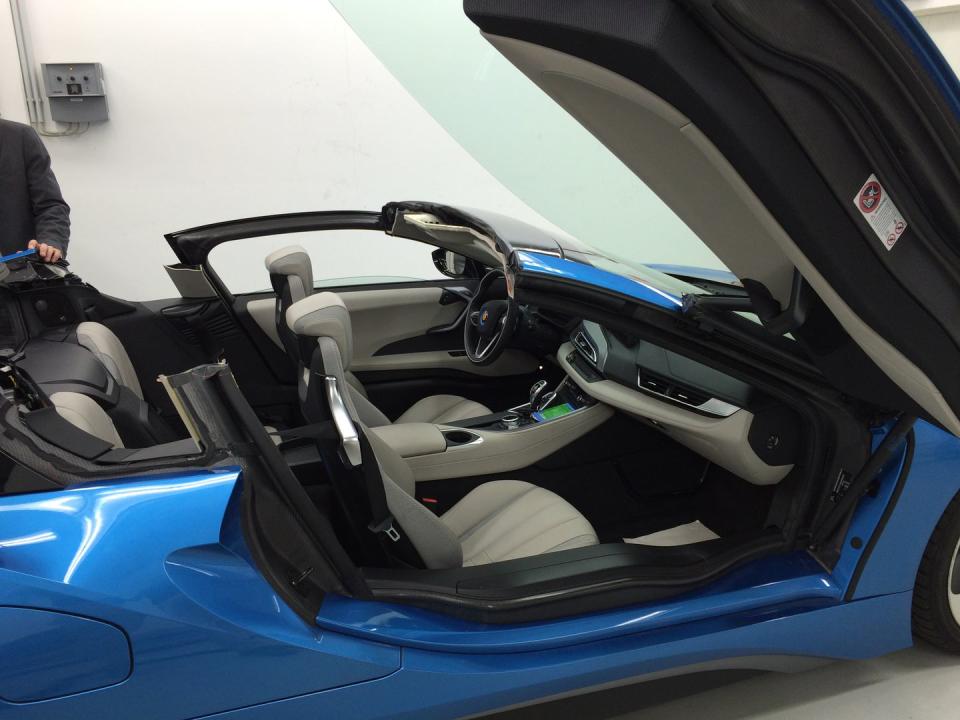
Of course before this old school chop job could begin, the team led by long-time BMW veteran Rainer Rump had to find a way to make the soft top economically viable. That's where the people at BMW's Leipzig factory chipped in, making low-volume production possible by integrating the Roadster's production into the regular i8 line, but without the need for special tooling, or messing up the plant's complicated logistics.
Within the Group, only the Leipzig factory could cut costs sufficiently, as it has a team flexible enough to produce both high-selling steel cars like the 1 and 2-Series, volume carbon models like the i3, and halo products like the i8.
Once the board was conquered, a new deadline was set for spring, 2018, leaving just 22 months for Rump's team to heavily re-engineer the model. After the first crash tests confirmed that the i8's structure is rigid enough without a roof, the design team got more freedom to end up with both the shapes they wanted and a drag figure of 0.28 Cd, while engineering built four driving prototypes by hand.
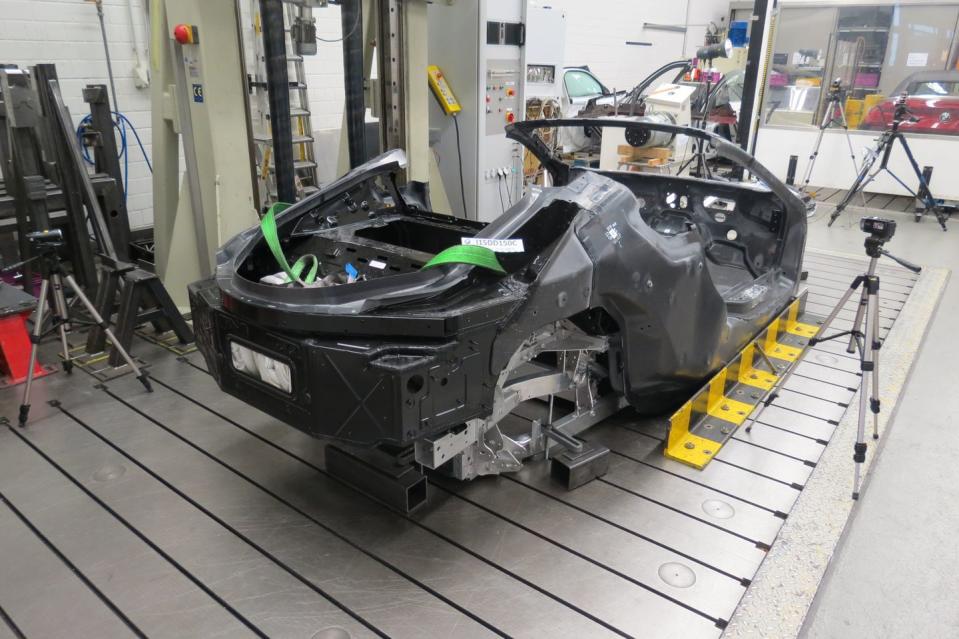
Okay, so let's have a look at what happens when you saw off the roof of your i8 Coupe, just in case you're planning to do that:
A wave of hot air from the front air vent will roll up the windscreen, only to get sucked into the cockpit. The solution is to seal that air vent on the bonnet, and re-direct the hot air from the radiator to exit behind the front wheels.
At speed, you'll notice there's a weird noise coming from somewhere behind your head. Several 3D-printed prototypes and wind tunnel tests later, you'll realize it's coming from the speaker grilles. You'll need to create new grilles covered in molleton fabric, making sure they can be produced at an industrial scale.
You'll need to come up with special hinges to make the butterfly doors happen. You'll figure it out.
Roof. You don't have one, but you need to. Eventually, you should settle for a folding soft top that folds vertically in a Z-shape in fifteen seconds at up to 30mph. To make it work, you'll also need to 3D-print a metal part that looks like this:
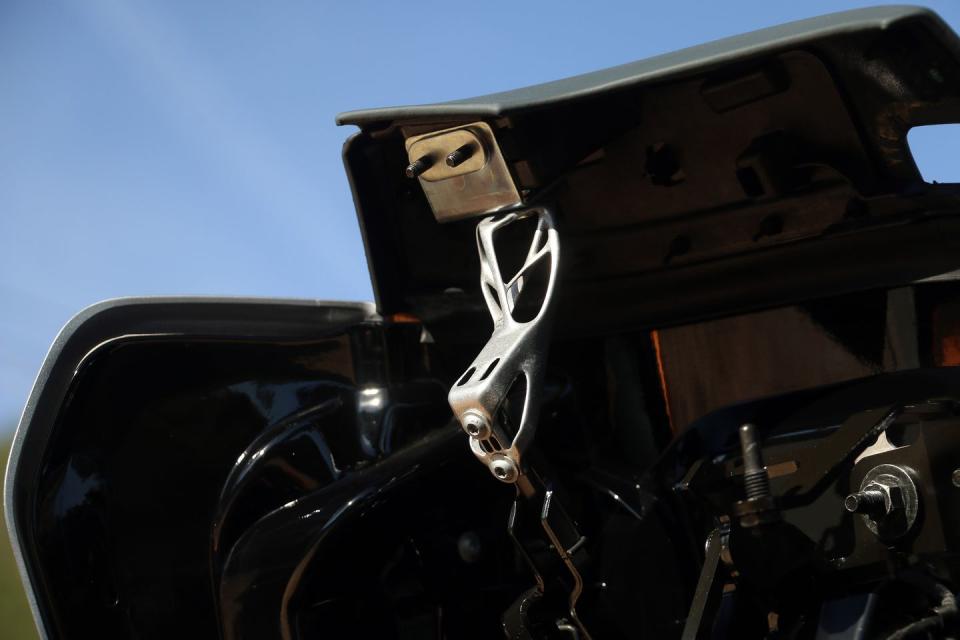

It's definitely naked, since BMW isn't shy to show off its roadster-specific engineering solutions. And while the soft top team went north to check comfort levels under extreme conditions, the powertrain and chassis people kept busy improving performance and handling.
The Roadster debuted with the same upgrades as the Coupe got for 2019. A whopping 12 extra horsepower, and up to three extra miles of pure electric range thanks to a higher density battery pack that went from its original capacity of 7.1 kWh to 11.6.
More importantly, both new i8s also come with revised suspensions featuring upgraded shocks and stabilizer bars. Apparently, people were complaining about the Coupe's tendency for understeer.

The island of Mallorca isn't the most suitable test track for a sports car, due to the thousands of cyclists on its mountain roads who you mustn't hit with your eco sports car, for both ethical and legal reasons.
What I did manage to learn from this drive is that the i8 is still the most comfortable space ship money can buy, and its pure electric range of 18 miles is perfectly adequate for the application, even if the same figure happens to be 33 miles by the European standards. That's because despite what some BMW ads may seem to suggest, this isn't an EV. It's a fast hybrid that will drive silently pretty much every time you need it to.
The flow of power is complicated in theory, but very straightforward in practice. When cruising, you're in hybrid mode, and the car will switch to its 102 horsepower electric motor only under low loads. When you hit traffic or a residential area, the car will already be in EV mode, but you can choose to stay on battery power at all times, at up to 75 mph. Yes, eventually, the battery will run out. But it won't really have time to do that, since once the road clears off, you will flip the lever into sport anyway, and surprise surprise, not only will you get all the combined 374 horses, but your electric range will also start to climb, thanks to having more regeneration under braking.
It's a highly efficient combination that works flawlessly in daily traffic. What's more, the suspension upgrades led to a balanced chassis, and while no additional torque will turn the i8 into an oversteering burnout machine, the 2019 version is more keen to hit the curves at a higher pace. The electric boost also makes it feel faster than what the zero-to-sixty time of 4.4 seconds would suggest, while the Coupe is 0.2 seconds quicker, due to being 132 lbs. lighter.
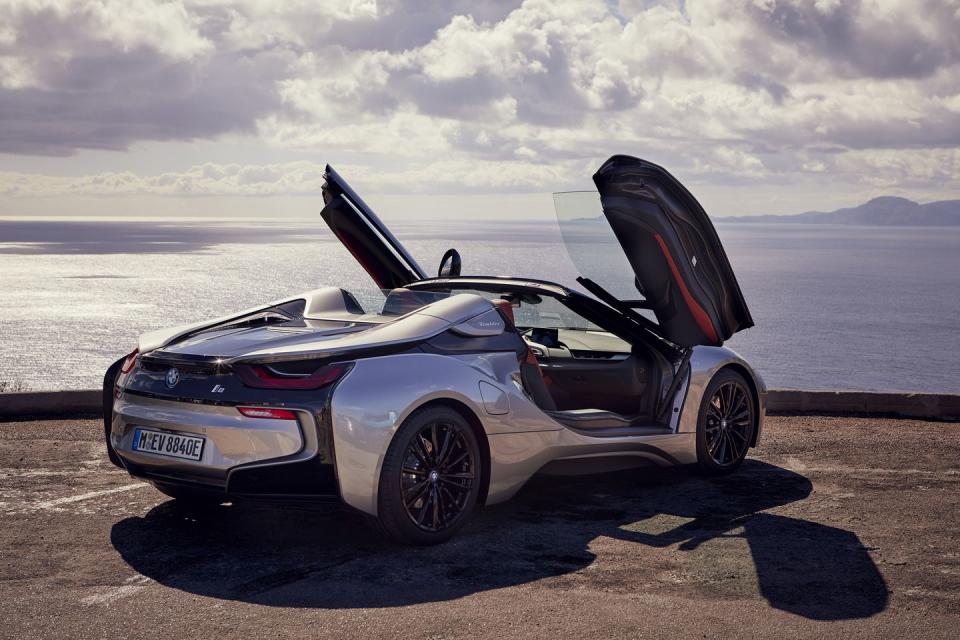
Do those butterfly doors squeak ever so slightly under load transitions? Yes. Did you lose two tiny seats in the name of a fancy roof mechanism? I guess, but who cares? Is digitally-enhanced 3-cylinder turbo sound pumping from the speakers, while your brain is fooled by active noise cancellation? Yeah, but it's not unpleasant, actually. Is the i8 Roadster expensive at $164,295? That's not even a serious question.
But you know what? You're daily driving an insane concept car from 2012 made real six years later by a bunch of dedicated people within a giant German company. And the i8 Roadster is not a bad way of celebrating that achievement. Silently or not, turning heads everywhere, for many years to come.
Rest assured, the soft top i8 will always be a rare sight.
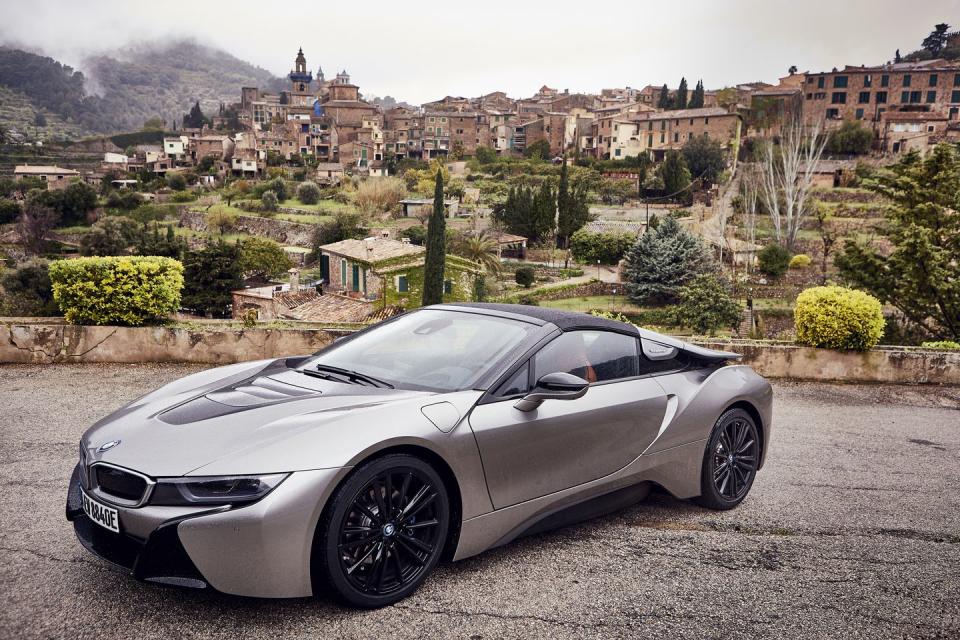
You Might Also Like

 Yahoo Autos
Yahoo Autos 